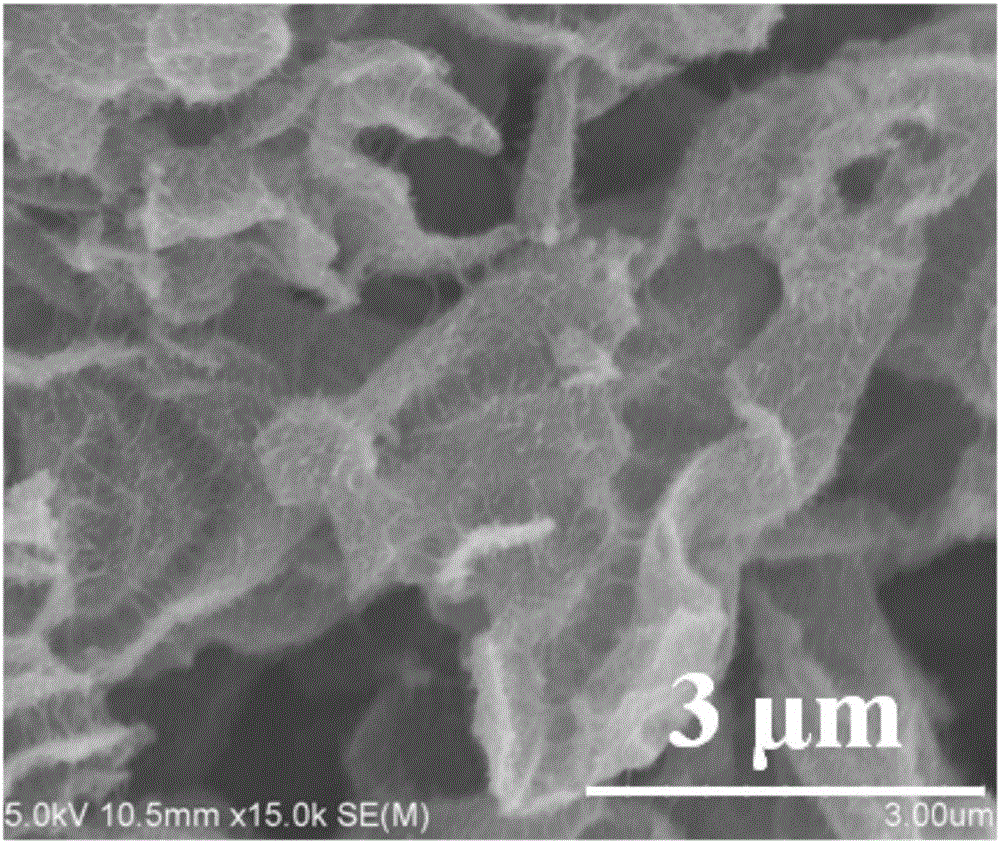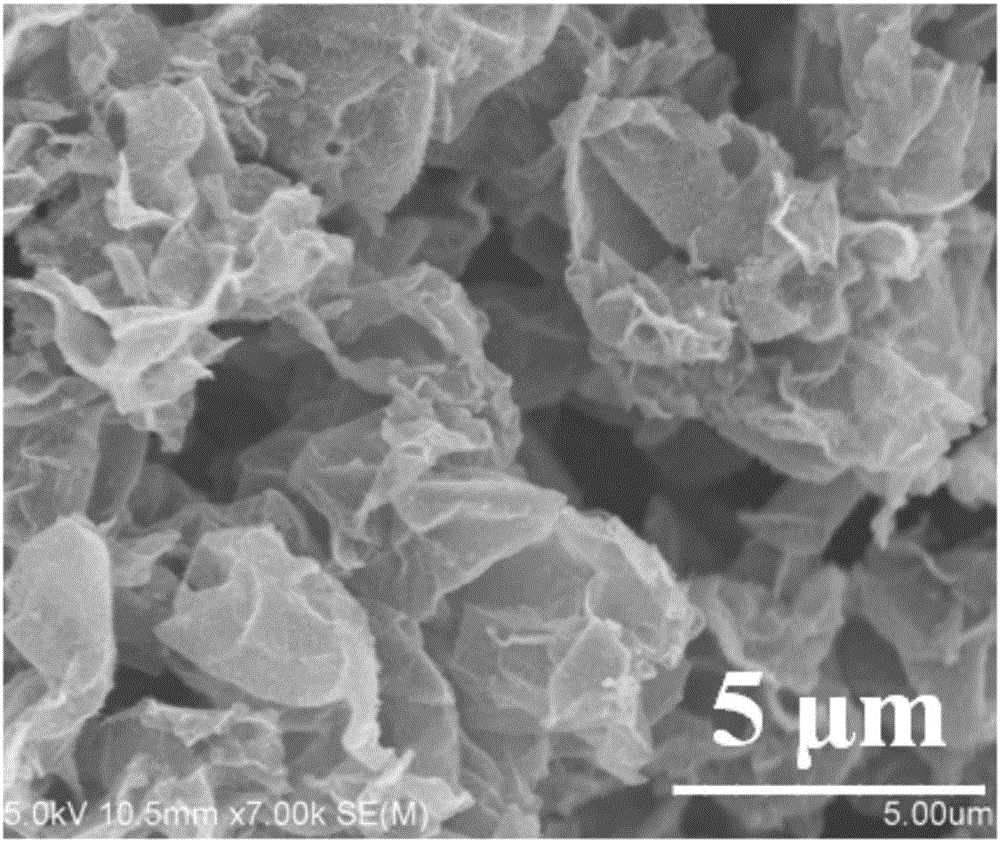Preparation method of manganese oxide/graphene nano-composite material, lithium ion battery negative electrode and lithium ion battery
A technology of nanocomposite materials and lithium-ion batteries, applied in battery electrodes, secondary batteries, circuits, etc., can solve problems such as poor cycle stability, achieve stable performance, improve battery performance, and small diameter
- Summary
- Abstract
- Description
- Claims
- Application Information
AI Technical Summary
Problems solved by technology
Method used
Image
Examples
Embodiment 1
[0040] Preparation of graphite oxide: weigh 5.0g graphite and 3.75g NaNO respectively 3 Put it into a 1L beaker, stir vigorously, slowly add 150mL of concentrated sulfuric acid, stir for 0.5 hours, then slowly add 20g of KMnO 4 , Added in 0.5 hours, and continued to stir for 20 hours, because the viscosity of the reactant increased, the stirring was stopped, and a paste-like purple-red substance was obtained. After standing for 5 days, slowly add 500mL deionized water and 30mLH 2 o 2 At this time, the color of the solution becomes more obvious bright yellow. After the solution is fully reacted, it is centrifuged and washed to obtain graphite oxide.
[0041] Hydrothermal process: Dissolve 70mg graphene oxide in 80mL deionized water, add 9mL concentrated sulfuric acid (ρ=1.84g / cm 3 ), ultrasonically dispersed for 4 hours, and then the solution was transferred to a reaction kettle, and reacted at a constant temperature of 200 ° C for 20 hours to obtain three-dimensional column...
Embodiment 2
[0045] The preparation method of graphite oxide is with embodiment 1.
[0046] Hydrothermal process: Dissolve 90mg of graphene oxide in 80mL of deionized water, add 6mL of concentrated sulfuric acid, ultrasonically disperse for 3 hours, then transfer it to a reaction kettle, and react at a constant temperature of 160°C for 30 hours to obtain three-dimensional columnar reduced graphene oxide. Wash collection.
[0047] Composite process: Dissolve 0.3g of potassium permanganate in water, add 18mg of three-dimensional columnar reduced graphene oxide into the above hydrothermal solution, soak at 15°C for 1 day, then transfer it to a reaction kettle, and react at a constant temperature of 220°C for 18 hours, the product was washed, dried under vacuum at 40° C. for 11 hours, and the product was collected.
[0048] Roasting process: take the product and roast it at a constant temperature of 500°C for 2 hours under a reducing atmosphere (95% argon and 5% hydrogen), then cool it down t...
Embodiment 3
[0050] The preparation method of graphite oxide is with embodiment 1.
[0051] Hydrothermal process: Dissolve 110mg of graphene oxide in 80mL of deionized water, add 12mL of concentrated sulfuric acid, ultrasonically disperse it for 2 hours, then transfer it to a reaction kettle, and react at a constant temperature of 260°C for 18 hours to obtain a three-dimensional columnar reduced graphene oxide. Wash collection.
[0052] Composite process: Dissolve 0.04g of manganese chloride in water, add 22mg of three-dimensional columnar reduced graphene oxide to the above hydrothermal solution, soak at 30°C for 3 days, then transfer it to a reaction kettle, and react at a constant temperature of 160°C for 30 hours , the product was washed, dried in vacuum at 60° C. for 7 hours, and the product was collected.
[0053] Roasting process: the product is roasted at 300° C. for 3 hours under a reducing atmosphere (95% argon and 5% hydrogen), cooled naturally to room temperature, and the comp...
PUM
 Login to View More
Login to View More Abstract
Description
Claims
Application Information
 Login to View More
Login to View More - R&D
- Intellectual Property
- Life Sciences
- Materials
- Tech Scout
- Unparalleled Data Quality
- Higher Quality Content
- 60% Fewer Hallucinations
Browse by: Latest US Patents, China's latest patents, Technical Efficacy Thesaurus, Application Domain, Technology Topic, Popular Technical Reports.
© 2025 PatSnap. All rights reserved.Legal|Privacy policy|Modern Slavery Act Transparency Statement|Sitemap|About US| Contact US: help@patsnap.com



